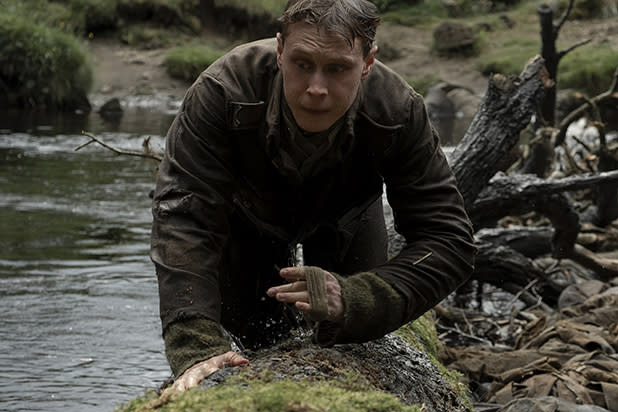How ‘1917’ Editor Lee Smith Cut a ‘One-Shot’ Feature Film
This story about Lee Smith is part of the “1917” cover package in the Oscar Nominations Preview issue of TheWrap’s Oscar magazine.
“You’ll laugh when you read this,” said Sam Mendes when he gave the “1917” script to editor Lee Smith.
And that’s exactly what happened, said Smith, an Oscar-winning film editor for “Dunkirk” whose other work includes “Interstellar,” “The Dark Knight,” “Master and Commander: The Far Side of the World,” “The Truman Show” and the James Bond film “Spectre” with Mendes.
“I laughed hysterically,” Smith said. “Sam actually had it on the cover page of the script that it should look like a single shot. And as I was reading it, I kept thinking to myself, ‘I have no idea how this is going to work.’ Whenever I read a script, the film plays out in my head in conventional coverage–and I had to keep reminding myself that even though there will of course be edits, you’re not supposed to see them.”
Also Read: '1917' Receives Overwhelming Acclaim Following NY and LA Screenings: 'Stunning on Every Level'

But Smith figured he was up to the challenge, so he joined the process as Mendes was blocking and rehearsing the film and figuring out where the (invisible) cuts would be.
“With conventional coverage, you look at things that aren’t working and think, ‘We’ll fix it in post,'” Smith said. “If a scene is a bit flabby or long-winded, you don’t panic because you have juxtapositions and cross-cutting and a thousand other ways to make corrections. But this shoot had to work from the get-go, without exception.”
To make sure it worked, Smith was tasked with assembling the film as it was shot–taking each day’s footage and presenting Mendes with a cut that included rough sound effects and temporary music. It was done partly to make sure the edits were seamless, but also so that he and Mendes could pick the take they wanted to use for the last shot of the day. The end of that take, after all, would determine exactly where the camera had to be at the start of the following day’s shooting.
“Every day I would look at the dailies, with up to 39 takes of each scene, and some of those takes gave us very little flexibility,” he said. “We were buying our next day based on the decisions we were making.”
Also Read: Watch Out, Oscars - '1917' Is Here, and It's the Real Deal
Although the film looks like an uninterrupted shot, with only one obvious cut, it actually contains dozens of cuts. “The shots lasted anywhere from 39 seconds to six minutes,” he said, “but not many of them were as long as six minutes. They were extremely variable in length.” (Mendes said his editor is mistaken, that the film contains an eight-and-a-half-minute shot.)
His edits, he added, were “on a sliding scale of complexity–some of them were effortless and some were very complicated. And on a daily basis, we didn’t quite know which ones were going to be which. Some were extremely difficult where on paper you wouldn’t have thought they would be, and others that looked tricky were surprisingly easy.”
And what were the hardest edits to pull off in the film? “I can’t tell you that,” he said with a laugh. “The trick is that you’ll never know, if I did my job.”
Read more of TheWrap’s “1917” cover package here:
“1917”: How Sam Mendes & Co. Created World War I in a Single Take
Inside Cinematographer Roger Deakins “1917” Chess Game
Go Into the Trenches With “1917” Production Designer Dennis Gassner
How “1917” Composer Thomas Newman Avoided Adding “Gloom on Gloom” to WWI Film Score
And read more from the Oscar Nominations Preview issue here.

Read original story How ‘1917’ Editor Lee Smith Cut a ‘One-Shot’ Feature Film At TheWrap

